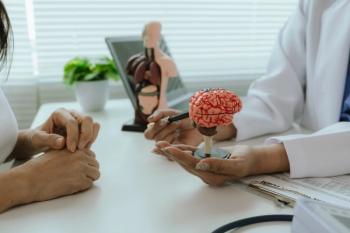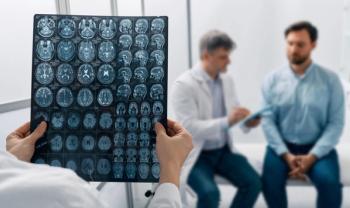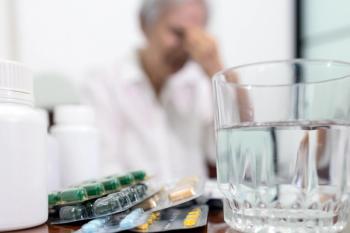
Managing Migraine, Part 4: A Focus on New Drugs for the Acute Treatment of Migraine
Pharmacists can be a helpful resource in counseling patients about the acute treatment of migraine. Patients often have questions about the best options for treating a migraine attack.
Sara Crystal, MD, is a neurologist and headache specialist currently serving as
When considering the general principles of acute treatment, Crystal keeps this in mind: “While not all patients need a prescription migraine preventive treatment, all patients should be offered a migraine-specific acute treatment. By the time someone is seeking care, they no doubt have tried over-the-counter medications and found them ineffective.”
In terms of goals of acute migraine treatment, Crystal aims for:
- Pain freedom within 2 hours
- No recurrence of pain within 24 hours
- Minimal need for rescue or repeat dosing
- Tolerable side effects
- Ability to return to normal function
- Decreased ER visits for migraine
Crystal noted that triptans are generally considered first-line treatment in patients without contraindications, with the caveat that patients with the following conditions should not take triptans due to their effects on vessel constriction:
- Uncontrolled hypertension (blood pressure >140/90)
- Cardiovascular disease or risk factors
- Cerebrovascular disease or stroke
- History of ischemic colitis
- Use cautiously in patients over 50 years old due to cardiovascular risk factors
- Use cautiously in patients with Raynaud phenomenon
There are 7 different oral triptans available:
- Naratriptan (Amerge)
- Almotriptan (Axert)
- Frovatriptan (Frova)
- Sumatriptan (Imitrex)
- Rizatriptan (Maxalt)
- Eletriptan (Relpax)
- Zolmitriptan (Zomig)
Patients who experience significant nausea or vomiting, or those who do not respond to oral triptans, may benefit from non-oral triptans, including nasal sprays and injectables. To make this determination, Crystal assesses the patient’s response to the acute medication after 2 different attacks. If the drug is ineffective, she considers another class of medication; another route of delivery can also be considered.
The risk of serotonin syndrome is minimal, said Crystal, referring to this a 2018 study published in JAMA Neurology1. While serotonin syndrome is an important counseling point, the study concluded that “patients with coexisting affective disorders and migraine need not forgo management of one condition to treat the other.”1
Other drugs that Crystal considers as part of a patient’s treatment include:
- Nonsteroidal anti-inflammatory drugs (NSAIDs), as an add-on treatment to triptans
- Anti-nausea medications such as ondansetron or metoclopramide for patients who experience nausea with migraine attacks
According to Crystal, the gepant class of drugs has several advantages over triptans. These small-molecule CGRP receptor antagonists have “better tolerability/side effect profiles, and they do not cause vasoconstriction, so they should be safer in patients with stable cardiovascular disease,” she said, but cautioned that there are drug interactions to consider.
For the following drugs, always check for drug interactions before filling a prescription:
Gepant: Rimegepant orally disintegrating tablet (Nurtec ODT)2,3
- Rimegepant is a calcitonin gene-related peptide receptor antagonist indicated for the acute treatment of migraine with or without aura in adults. It is also approved for the prevention of episodic migraine.
- The dosage of rimegepant for acute treatment is one 75 mg tablet, placed on or under the tongue, for 1 dose as needed. The maximum dose is 75 mg in 24 hours. The safety of using more than 18 doses in 30 days has not been studied.
- The most common side effects of rimegepant are nausea, abdominal pain, and indigestion.
Drug interactions:
- Avoid concomitant administration with strong CYP3A4 inhibitors, strong and moderate CYP3A inducers, and inhibitors of P-gp or BCRP.
- Avoid a second dose of rimegepant within 48 hours when taking a moderate CYP3A4 inhibitor (including grapefruit juice).
Counseling note: Allergic reactions may be severe and may occur several days after taking a dose of rimegepant.
Gepant: Ubrogepant (Ubrelvy)4,5
Ubrogepant is a CGRP receptor antagonist indicated for the acute treatment of migraine with or without aura in adults.
Dosage is 50 mg or 100 mg by mouth as needed. A second dose can be taken at least 2 hours after the first dose if needed, and the maximum dose is 200 mg in 24 hours.
The most common side effects are nausea, somnolence, and dry mouth.
Drug interactions:
- Avoid concomitant administration with strong CYP3A4 inducers.
- See prescribing information for dosage adjustments for other interacting drugs.
Counseling note: The patient should not take a second dose of Ubrelvy within 24 hours after consuming grapefruit or grapefruit juice.
Serotonin (5-HT) 1F receptor agonist: Lasmiditan (Reyvow)6,7
- Lasmiditan is a serotonin (5-HT) 1F receptor agonist. It is indicated for the acute treatment of migraine with or without aura in adults.
- Lasmiditan is a Schedule V controlled substance. Patients should be advised to avoid alcohol when taking lasmiditan, as alcohol increases the risk of CNS and respiratory depression as well as psychomotor impairment.
- Lasmiditan dosage is 50 mg, 100 mg, or 200 mg taken by mouth 1 time as needed. No more than 1 dose should be taken in 24 hours. The lasmiditan tablet should be swallowed whole and not split, crushed, or chewed.
- The most common side effects are dizziness, sedation, fatigue, paresthesia, nausea and vomiting, muscle weakness, hypersensitivity, increased blood pressure, and decreased heart rate.
Drug interactions:
Lasmiditan may decrease heart rate and should be used with caution in patients taking medications that lower heart rate, such as propranolol.
Avoid concomitant use of drugs that are P-gp or BCRP substrates, as lasmiditan can inhibit both.
Counseling note: Lasmiditan should only be taken if the patient has at least 8 hours until they need to drive or operate machinery. A second dose of lasmiditanis not effective for the same migraine attack.
There are several non-invasive neuromodulation devices on the market, Crystal added. “These offer a non-medication option and can be used in conjunction with medications,” she said, noting that Nerivio—a smartphone-controlled wearable—is approved for the acute treatment of migraine.
Be sure to check out the other three parts of this series:
References
- Orlova Y, Rizzoli P, Loder E. Association of Coprescription of Triptan Antimigraine Drugs and Selective Serotonin Reuptake Inhibitor or Selective Norepinephrine Reuptake Inhibitor Antidepressants With Serotonin Syndrome. JAMA Neurol. 2018;75(5):566–572. doi:10.1001/jamaneurol.2017.5144
- Nurtec ODT. DailyMed. Available at
https://dailymed.nlm.nih.gov/dailymed/drugInfo.cfm?setid=9ef08e09-1098-35cc-e053-2a95a90a3e1d . Accessed 12/19/2021. - Nurtec ODT. Epocrates. Available at
https://online.epocrates.com/drugs/916710/Nurtec-ODT/Monograph . Accessed 12/19/2021. - Ubrelvy. DailyMed. Available at
https://dailymed.nlm.nih.gov/dailymed/drugInfo.cfm?setid=fd9f9458-fd96-4688-be3f-f77b3d1af6ab . Accessed 12/19/2021. - Ubrelvy. Epocrates. Available at
https://online.epocrates.com/drugs/907010/Ubrelvy/Monograph . Accessed 12/19/2021. - Revyow. DailyMed. Available at
https://dailymed.nlm.nih.gov/dailymed/drugInfo.cfm?setid=aea3358c-ff41-4490-9e6d-c7bf7b3de13f&audience=professional . Accessed 12/19/2021. - Reyvow. Epocrates. Available at
https://online.epocrates.com/drugs/910910/Reyvow/Monograph . Accessed 12/19/2021.
Newsletter
Pharmacy practice is always changing. Stay ahead of the curve with the Drug Topics newsletter and get the latest drug information, industry trends, and patient care tips.
























































































































